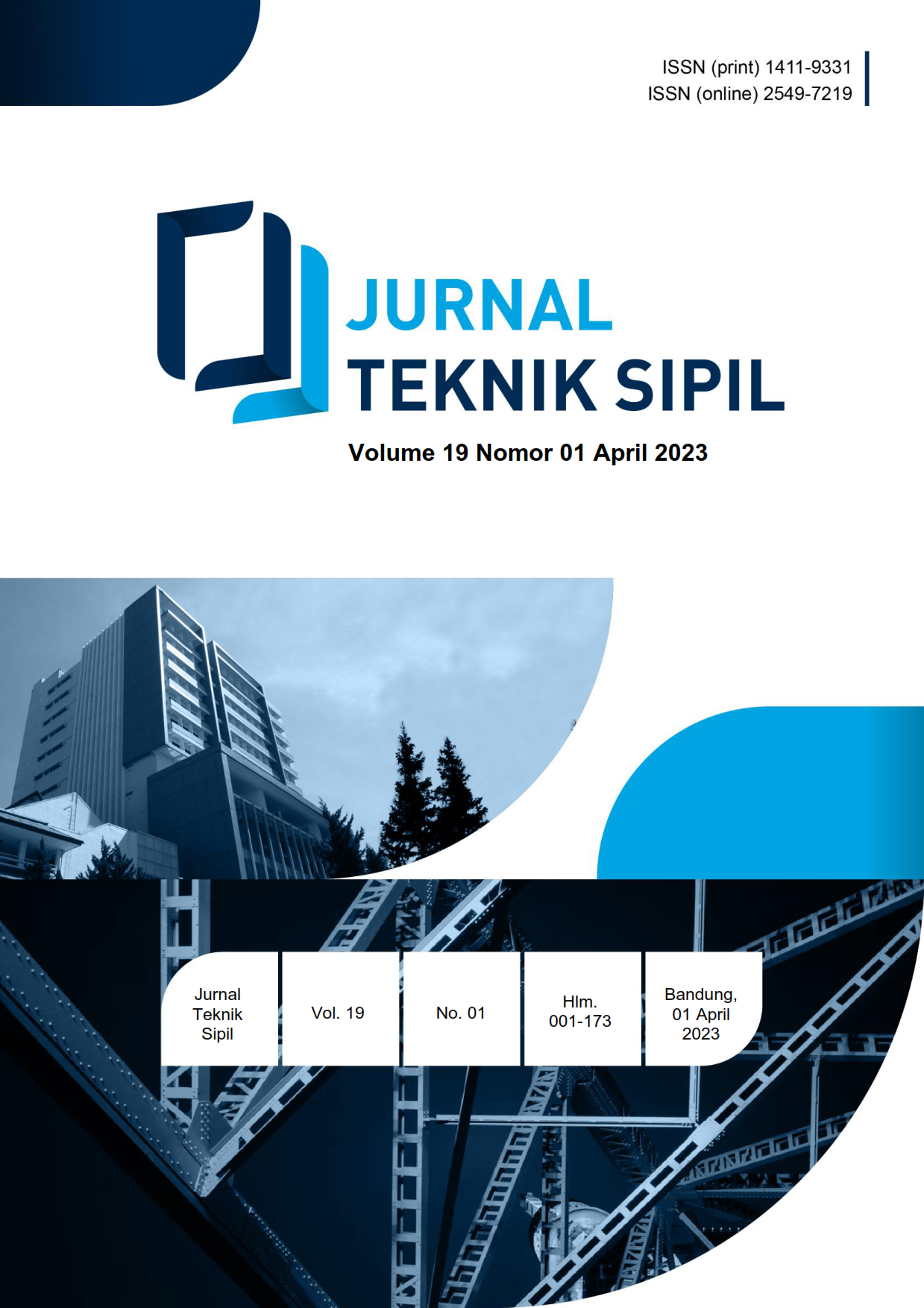Capacity and Stability Analysis of Cipamingkis Weir Failure, West Java
DOI:
https://doi.org/10.28932/jts.v19i1.5958Keywords:
Analysis, Capacity, Stability, Weir FailureAbstract
One of the water management efforts that can be done is the construction of a weir. Aspects that need to be considered in the planning and construction of a weir are capacity and stability. Cipamingkis weir was built in 1980 and is a vital irrigation infrastructure because it irrigates ± 7.508 hectares of rice fields in Bogor Regency and Bekasi Regency. This study aims to determine the capacity of the weir and then calculate its stability condition. Through calculations, it is known that the stability of the weir during normal water level conditions is safe against overturning with a safety factor of 3,8 greater than 1,5 for overturning with earthquake and a safety factor of 10,8 greater than 1,5 for overturning without earthquake. Under normal water level conditions, the weir is known to be safe against shear with a factor of safety of 1,56 greater than 1,1 for shear with earthquake and a factor of safety of 2,99 greater than 1,3 for shear without earthquake. Under flood water conditions, the stability of the weir is safe against overturning with a factor of safety of 1.67 greater than 1,5 for overturning with earthquake and a factor of safety of 2,38 greater than 1,5 for overturning without earthquake. Likewise, the stability of the weir against shear is known to be safe with a factor of safety of 1,68 greater than 1,1 for shear with earthquake and a factor of safety of 3,11 greater than 1,3 for shear without earthquake. The capacity of the weir using the 50-year return period is 1647,44 m3/sec as the ideal design discharge and for the 100-year return period is 1859,36 m3/sec.Downloads
References
Afrian F., dkk. (2016). Analisis Stabilitas Bendung (Studi Kasus: Bendung Tamiang). Jom FTEKNIK, 3(2), 1-11.
Bargess Moch. Fadhli, Cindrawaty Lesmana, dkk. (2009). Analisis Struktur Bendung Dengan Metode Elemen Hingga. Jurnal Teknik Sipil. 5 (1), 1-21.
Sadono Kresno W., dkk., 2017, Analisis Geologi Teknik Pada Kegagalan Bendung Cipamingkis, Bogor, Provinsi Jawa Barat, Proceeding Nasional Kebumian ke-10, Grha Sabha Pramana, Fakultas Teknik Universitas Gajah Mada, September 13-14, 190-201.
Siagian, Trisnafia. 2012. Evaluasi Hidrolis Bendung Lama Terhadap Rencana Bendung Baru pada Bendung Timbang Lawan di Kabupaten Langkat. Universitas Sumatera Utara
Sri Harto Br. (2003). Analisis Hidrologi. Gramedia Pustaka Utama. Yogyakarta
Standar Perencanaan Irigasi KP-01, Kriteria Perencanaan Bagian Perencanaan Jaringan Irigasi.
Standar Perencanaan Irigasi KP-02, Kriteria Perencanaan Bagian Bangunan Utama (Head Works).
Standar Perencanaan Irigasi KP-04, Kriteria Perencanaan Bagian Bangunan.
Tallar Robby, Ivan. (2020). Studi Eksperimental Pengaruh Blok-Halang Pada Lantai Kolam Pada Lantai Kolam Olak Bendung Terhadap Penggerusan Lokal, Jurnal Teknik Sipil, 16(2), 134-192.
Triatmodjo, Bambang. (2008). Hidrologi Terapan, Beta Offset, Jakarta.
Tri, Sihombing. (2010). Kontrol Perhitungan Stabilitas Bendung Proyek Irigasi Sungai Ular Kabupaten Serdang Berdagai. Politeknik Negeri Medan
Downloads
Published
How to Cite
Issue
Section
License
Copyright (c) 2023 Tri Octaviani Sihombing, Olga Catherina Pattipawaej , Monica Rina Tutkey

This work is licensed under a Creative Commons Attribution-NonCommercial 4.0 International License.















